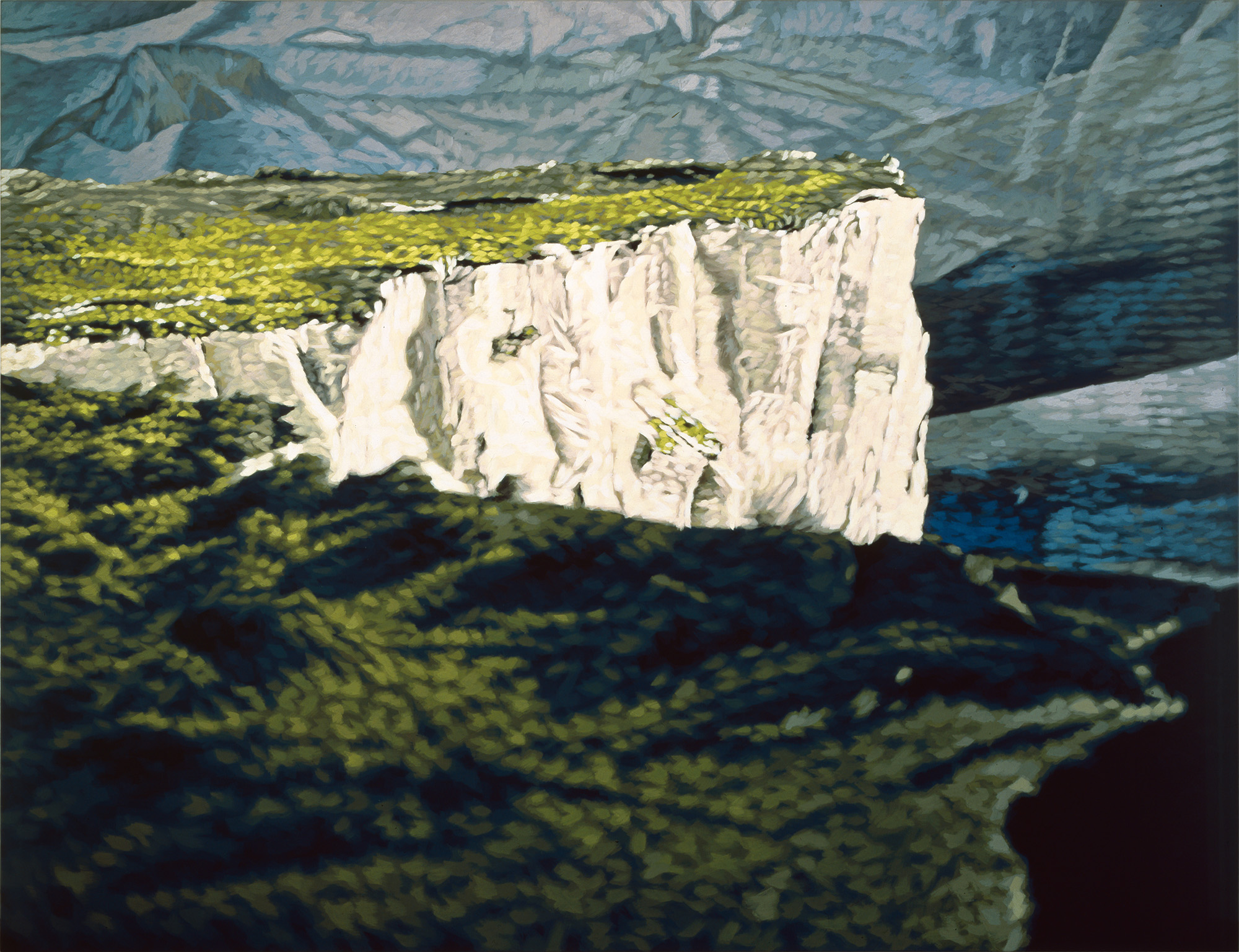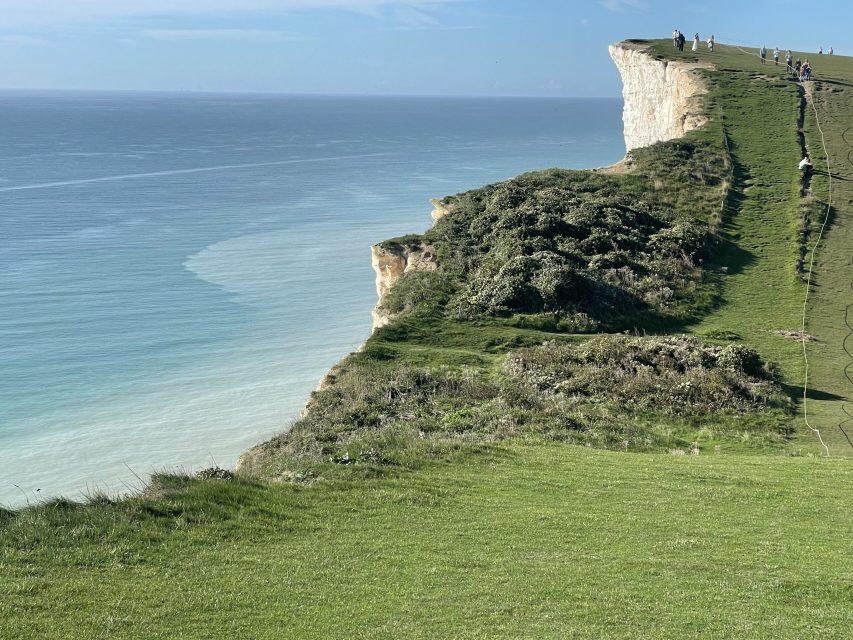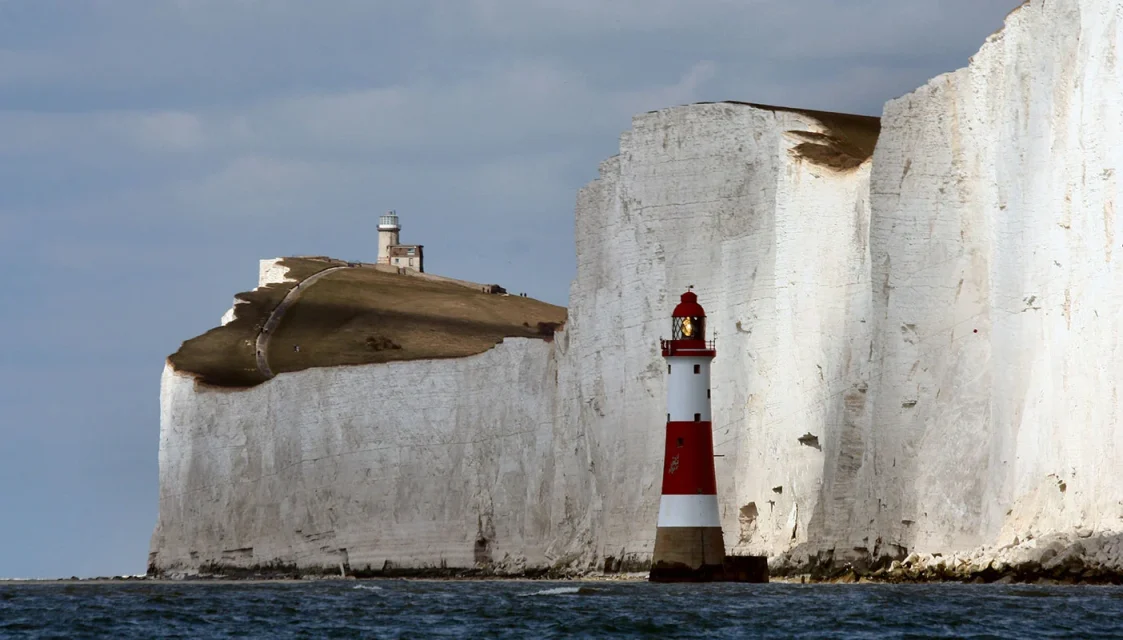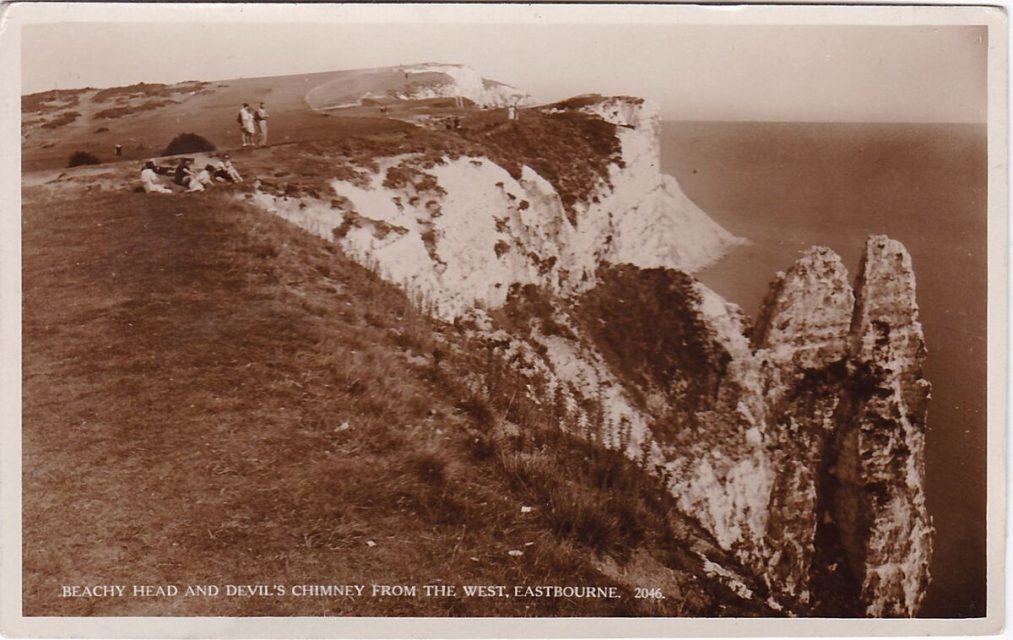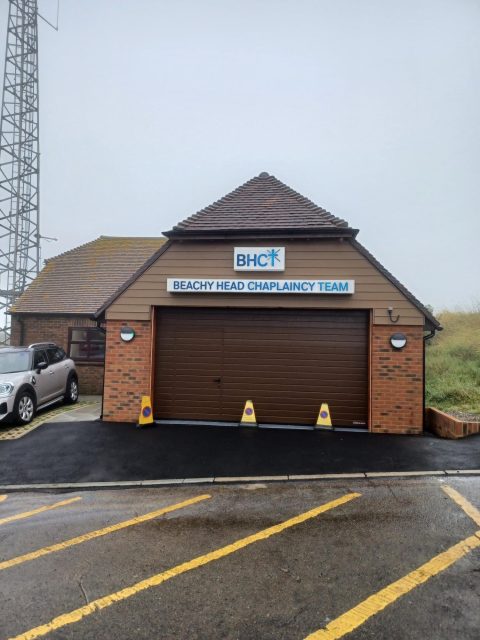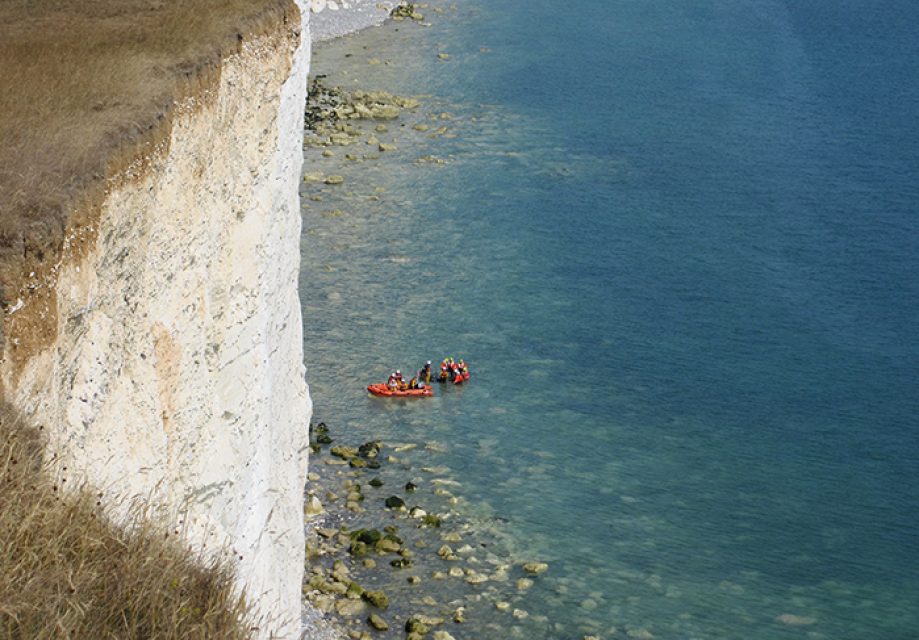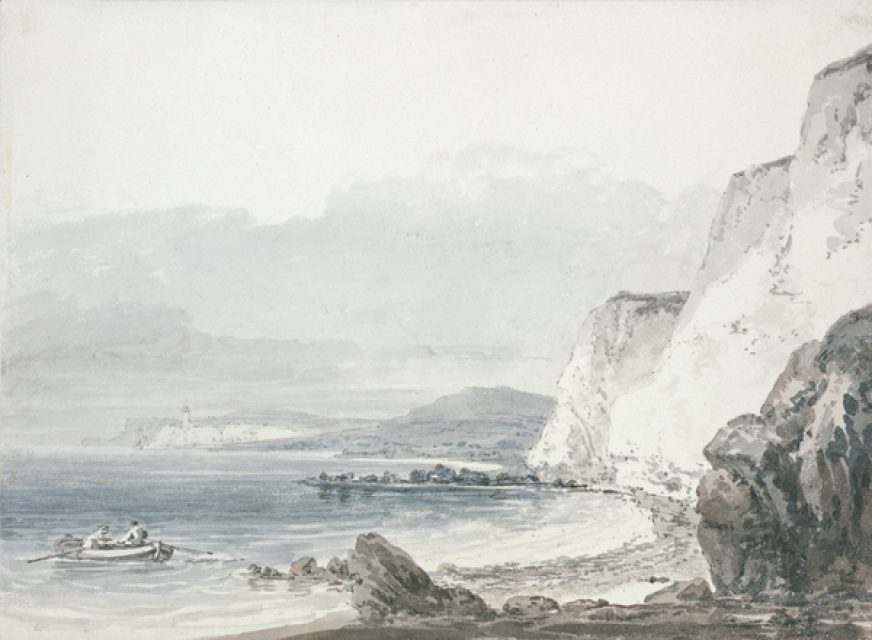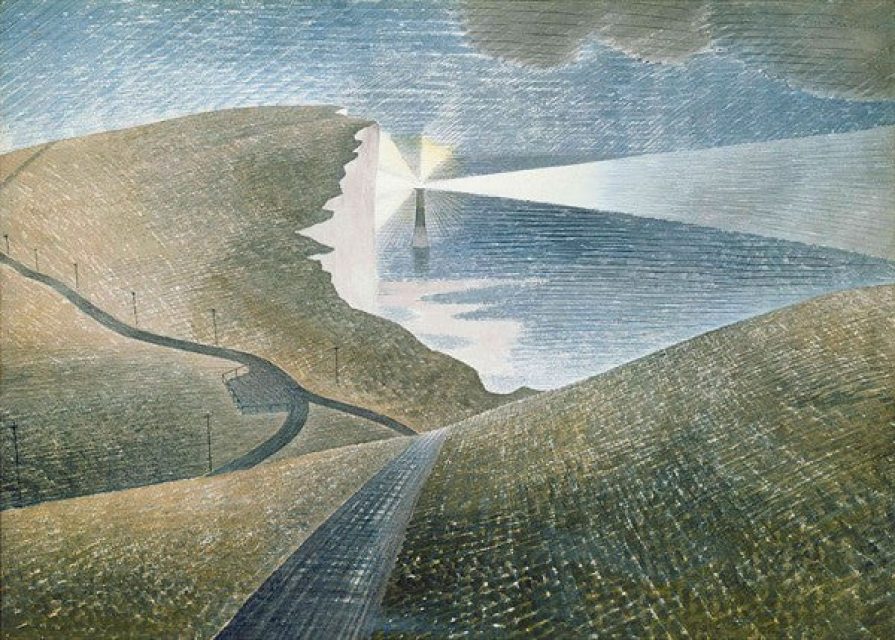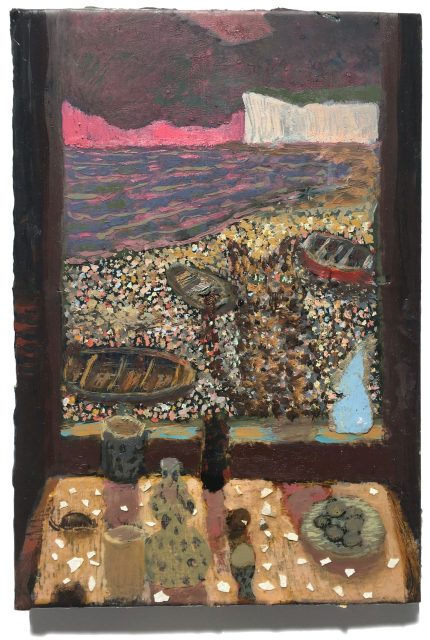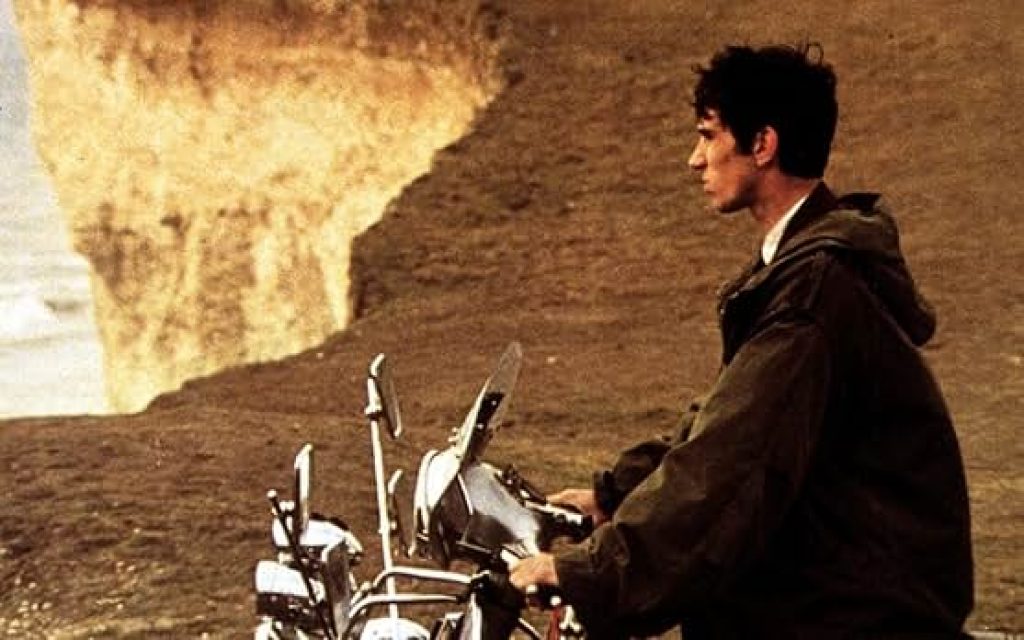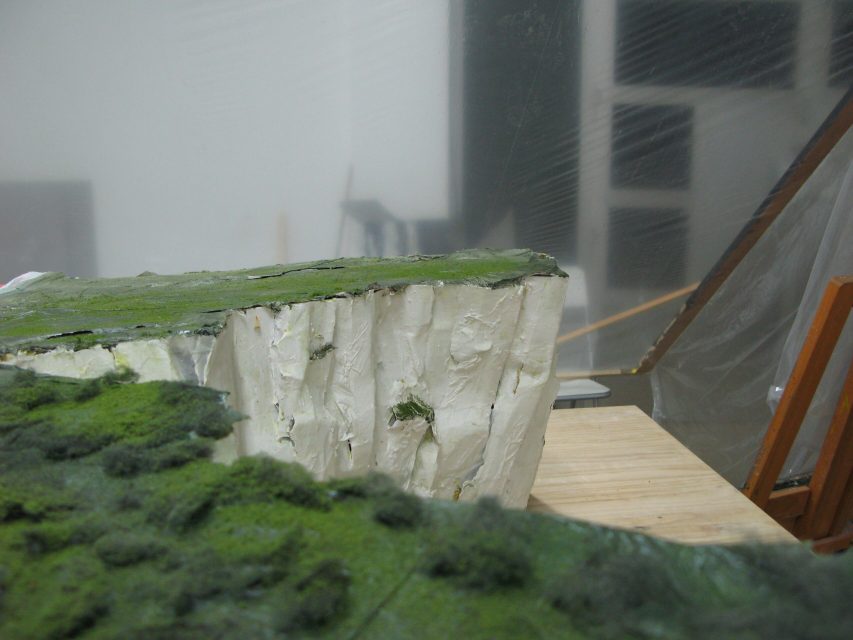The name Beachy Head is as bizarre as it is beautiful. It’s one of my favorite places: the towering white cliffs of East Sussex, where the rolling, pastoral landscape of the South Downs drops suddenly and steeply into the sea.
For British bomber pilots during World War II, Beachy Head marked the final glimpse of home, before crossing the Channel into Germany. It was also the first thing they saw on the way back, provided they made it. The cliffs form a kind of threshold.
The chalk cliffs’ sheer drop of 162 meters makes it one of the top three suicide sites in the world. Stickers and signs with emergency numbers offer help and urge people to rethink their plans. There is even a small onsite chaplaincy that claims to have responded to 15,000 incidents since 2004.
I used to have recurring nightmares of walking over the flat grass surface at Beachy Head, looking at an eerie exhibition of giant head statues. The memory of the dream still unsettles me.
The dazzling whiteness of Beachy Head is, ironically, preserved by corrosion. Waves continually carve out the lower part, making the upper cliffs unstable, until they eventually collapse, turning the sea milky white. Each drop reveals a fresh, bright surface, which then dulls over time until the next fall. Belle Tout, the upper lighthouse that once stood at the edge of the cliff, had to be moved 17 meters inland in 1999. It will need to be moved again. Meanwhile, the old stone path leading to its former location now heads straight over the cliff.
